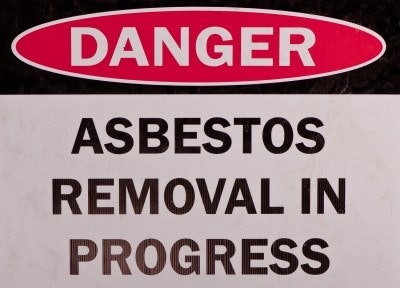
Exposure to asbestos, a known human carcinogen, has been an issue that construction workers have been facing head on for decades. The height of asbestos use was between the 1920s to 1980s; however, exposure continues to be prevalent well after asbestos-containing materials saw a drastic decrease in usage.
Through renovation, demolition and lackluster regulations, construction workers are still prone to the dangers of asbestos. While it may be some time before we see a complete ban of this dangerous mineral in the United States, there are safety protocols that construction workers can follow to limit their risk of being exposed.
Why is asbestos dangerous?
Asbestos is the only known cause of mesothelioma cancer, a highly aggressive disease that can affect the lining of the lungs, abdomen and heart. When asbestos-containing materials are improperly handled, asbestos fibers are released into the air where they have the ability to be inhaled or ingested by anyone in close proximity.
Once in the body, these microscopic fibers become embedded in our internal organs, where they lay dormant and scar surrounding tissues over a prolonged period of time. On average, most patients diagnosed with mesothelioma do not experience symptoms for 10 to 50 years.
While exposure prevention is the best option, it is also important to report any symptoms to your doctor and receive routine checkups. Symptoms of this disease include coughing, shortness of breath, muscle weakness, fatigue and unexplained weight loss.
Regulations on asbestos
Unfortunately, asbestos use is not banned within the United States. This carcinogen continues to be allowed in up to 1% of certain manufactured goods. Furthermore, the Environmental Protection Agency (EPA) disregarded the opinions of its own experts when deciding the most recent policy to further tighten the protections of public health. Experts proposed an outright ban of this mineral, stating that it causes extreme harm to individuals, and that there are a variety of alternatives that are much safer.
In April of 2019, the EPA created a ruling, known as the “final rule” that decided that asbestos-containing products not on the market will not be able to be sold without being evaluated and heavily regulated first. This still does not take into account the countless number of people being exposed through existing asbestos products, along with the fact that many older homes and buildings still contain this harmful toxicant.
Steps to stay safe in construction
For renovation and demolition workers especially, utilizing safety equipment is a must when on the job. Materials such as insulation, floor tiles, preformed pipe wrap and roofing shingles are just a few of the culprits that may be harboring asbestos-containing materials (ACMs).
With renovation and demolition often involving the removal and destruction of these materials, the chance for asbestos fibers to be released into the air is increased.
While performing these activities, there is certain personal protective equipment that should be worn:
- A facemask with a filter rating of P100. This is a rating provided by the National Institute for Occupational Safety and Health (NIOSH) that states that a P100 rating should block at least 99.97% of airborne particles.
- Clothing and gloves that fully cover your skin and can be bagged and labeled for proper disposal.
- Eyeglasses to prevent dust and debris from coming into contact with your eyes.
There is also protocol that should be followed when handling asbestos-containing materials:
- Having an EPA certification in asbestos abatement is highly recommended.
- Take out nails and screws prior to removing the materials to avoid breakage in the material.
- Use tools that are non-powered, as these create less dust.
- Wet any materials or surfaces that will be removed to prevent dust from becoming airborne.
- Work in a ventilated area where there is room for air to circulate freely.
- Shower immediately after leaving the jobsite, ensuring you clean your hair, hands and body thoroughly, even if you were wearing protective clothing.
Maintain a secure environment on the jobsite
It is important to properly maintain a jobsite, as well as ensure workers are safe. Between airborne hazards and the multitude of other safety concerns that can occur on site, keeping employees safe is the number one priority.
As more workers become educated on proper safety protocol and jobsites are maintained, the number of cases with workplace related accidents and diseases will hopefully be reduced.
Colin Ruggiero dedicates his time to informing others about mesothelioma cancer and preventative measures that can be take to avoid exposure to asbestos.



















